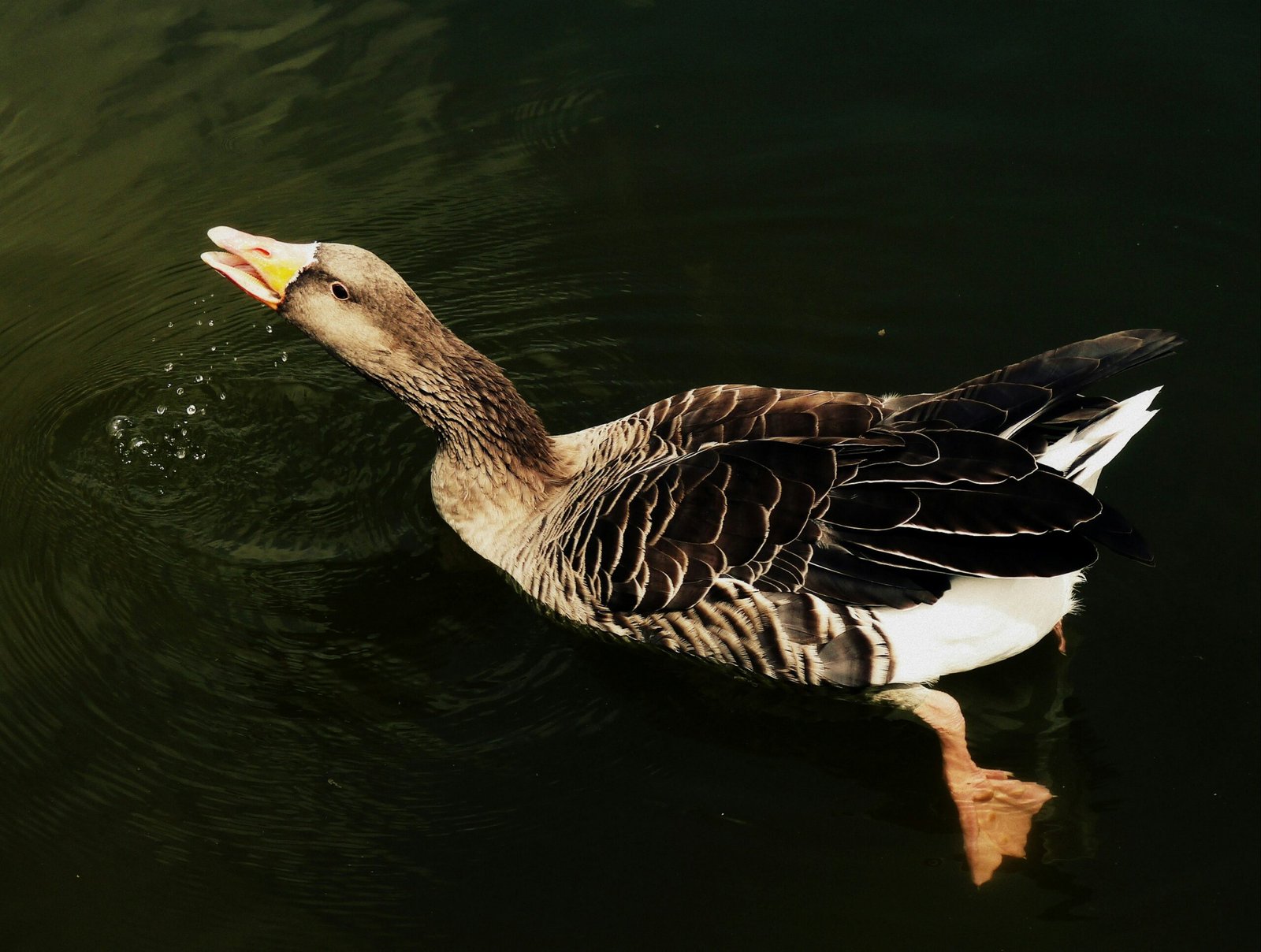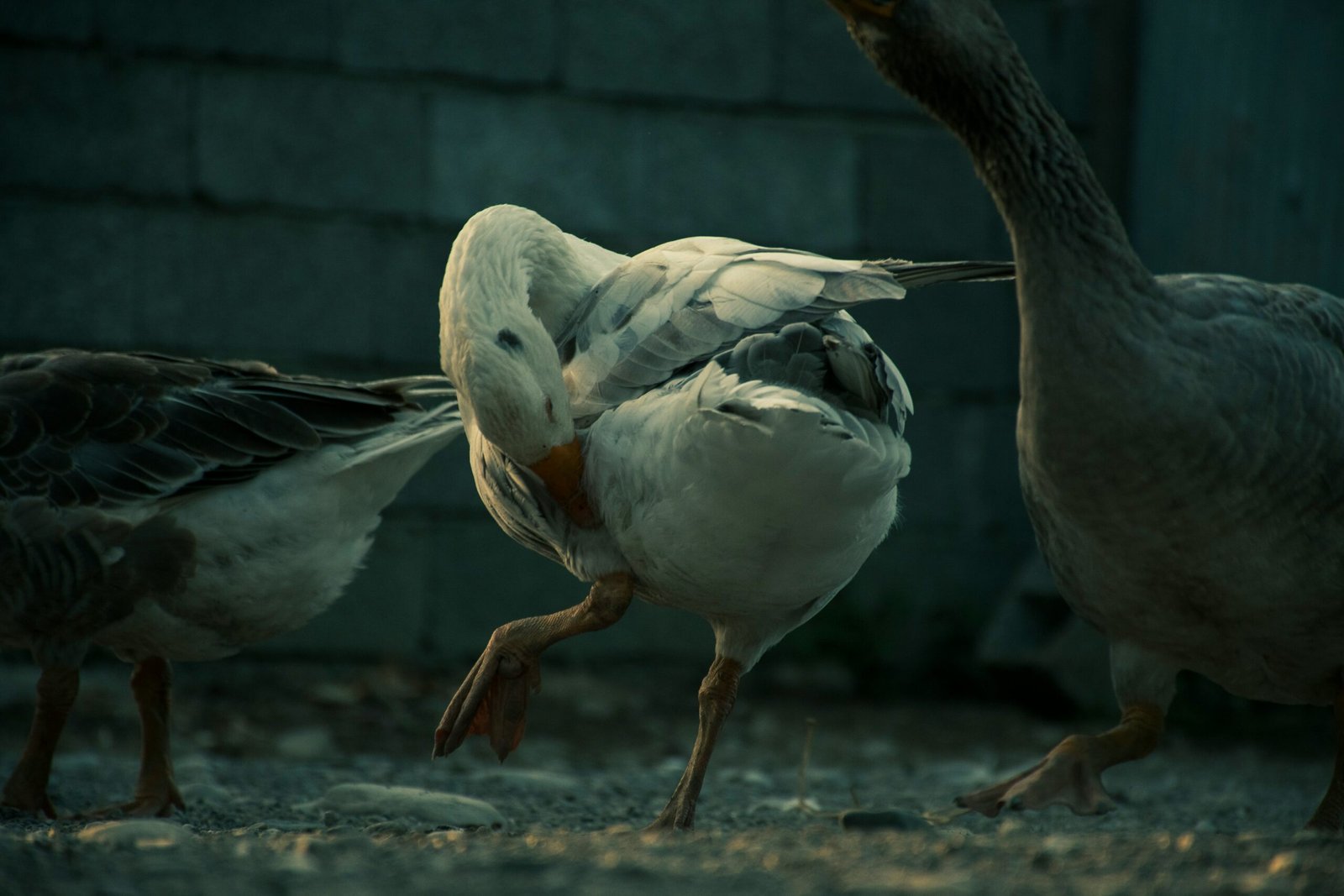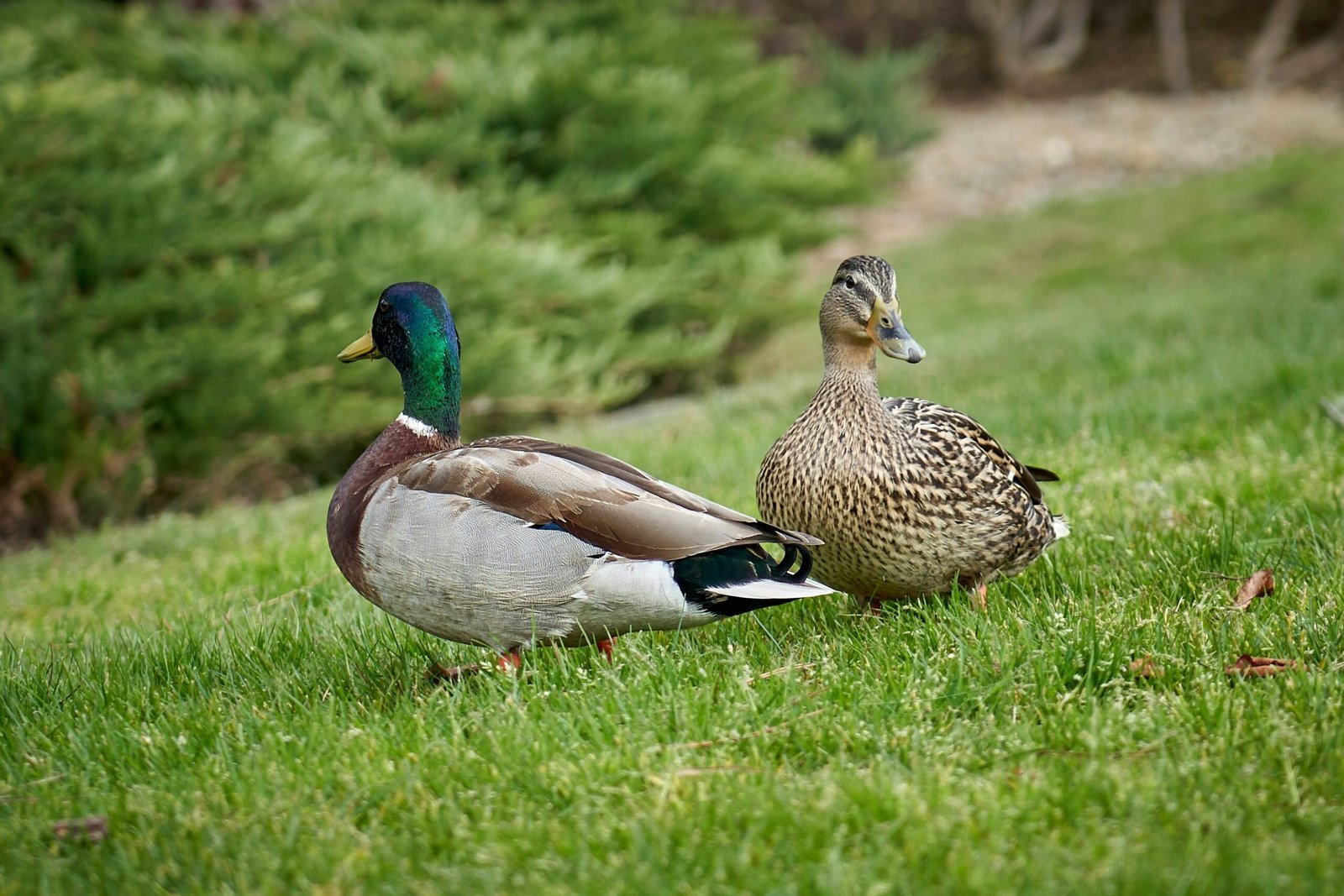Pale beaks in ducks can be a cause for concern for many pet owners and bird enthusiasts. This seemingly minor change in appearance might indicate underlying health issues or nutritional deficiencies. A healthy beak is essential for ducks, playing a crucial role in their feeding, preening, and overall well-being. Understanding the reasons behind a pale beak and taking appropriate measures to address it is key to ensuring the health and happiness of your feathered friends.
The importance of a healthy, well-colored beak can’t be understated. A duck uses its beak for a variety of functions, such as eating, drinking, preening its feathers, and even as a means of self-defense. An unhealthy beak can impair these functions, leading to further complications. Hence, maintaining a healthy beak is integral to a duck’s overall health.
Importance of a Healthy Beak
A duck’s beak serves as a multi-purpose tool, essential for its survival and well-being. It is not only used for consuming food and water but also for preening and maintaining feather health. Additionally, a duck’s beak acts as a means of self-defense, helping to protect itself from potential threats. Therefore, any abnormalities or changes in the beak’s appearance should not be overlooked, as they may indicate underlying issues that require attention.
A healthy beak ensures efficient feeding, allowing ducks to consume a balanced diet and obtain the necessary nutrients for their overall health. It also enables proper preening, which is crucial for maintaining feather quality and waterproofing. Moreover, a strong and well-colored beak helps in establishing dominance and defending territory, contributing to the social dynamics of a duck community.
To maintain the well-being of your ducks, it is important to monitor the color and condition of their beaks and take appropriate measures if any abnormalities, such as paleness, are observed.
Understanding the Natural Color of a Duck’s Beak
The color of a duck’s beak can vary widely, ranging from yellow and orange to black or even a combination of these colors. This natural variation is influenced by multiple factors, including the breed of the duck, its age, the environment it lives in, and its diet.
Breed-specific characteristics often dictate the natural color of a duck’s beak. For example, Mallards typically have yellow to greenish beaks, while Pekin ducks have orange beaks. Age also plays a role, as beak color can change or fade as a duck ages. Environmental factors such as exposure to sunlight and elements can also affect beak coloration. Lastly, a duck’s diet has a significant impact on beak color. Foods rich in certain pigments can enhance or alter the natural color of a duck’s beak.
Factors Affecting Beak Color
The color of a duck’s beak is determined by a combination of genetic factors and external influences. Genetic factors primarily define the natural color variation among different duck breeds. These genetic traits are inherited from their parents and contribute to the unique appearance of each breed.
As ducks age, their beak color may undergo changes. It is not uncommon for the beak to fade or lighten in color as ducks grow older. This change is a natural part of the aging process and does not necessarily indicate any health concerns.
Environmental factors also play a role in beak coloration. Ducks exposed to ample sunlight tend to have more vibrant and richly colored beaks. Conversely, ducks that reside in environments with limited sunlight may exhibit paler beak colors. Additionally, exposure to harsh weather conditions, such as extreme cold or excessive heat, can affect the pigmentation of a duck’s beak.
The diet of a duck is another crucial factor that influences beak color. Certain pigments present in the foods ducks consume contribute to the intensity and vibrancy of their beak color. Foods rich in carotenoids, such as leafy greens, carrots, and various fruits, can enhance the natural coloration of a duck’s beak. Conversely, a lack of these pigments in the diet may result in a paler beak.
Potential Causes of Pale Beaks in Ducks
A pale beak may be caused by a lack of pigmentation due to genetic factors or nutritional deficiencies. Some ducks might naturally have lighter beaks due to their genetic makeup. However, a sudden or noticeable change in beak color can also indicate a nutritional deficiency, particularly a lack of certain vitamins and minerals that contribute to pigmentation.
Genetic Factors
Genetic factors play a significant role in determining the color of a duck’s beak. Different breeds have distinct genetic traits that influence beak coloration. For instance, Muscovy ducks are known for their dark-colored beaks, while Indian Runner ducks typically have light-colored beaks. In some cases, ducks may inherit genes that result in lighter beak pigmentation, leading to a naturally pale appearance.
Nutritional Deficiencies
Nutritional deficiencies can also contribute to pale beaks in ducks. Certain vitamins and minerals are essential for maintaining the proper pigmentation of a duck’s beak. Deficiencies in these nutrients can result in a loss of color and paleness. Key nutrients that play a role in beak coloration include Vitamin A, Vitamin B12, iron, and copper.
Vitamin A is crucial for the synthesis of pigments responsible for beak coloration. Insufficient Vitamin A intake can lead to a pale beak in ducks. Similarly, a deficiency in Vitamin B12, which is involved in red blood cell production, can cause anemia and result in paleness not only in the beak but also in other parts of the body.
Iron and copper are important minerals that contribute to the pigmentation of a duck’s beak. Inadequate levels of these minerals in the diet can lead to deficiencies and subsequently result in a loss of color in the beak.
It is important to ensure that ducks receive a well-balanced diet that provides all the necessary vitamins and minerals to maintain a healthy beak color.
Health Issues
In addition to genetic factors and nutritional deficiencies, various health issues can also affect beak color in ducks. Conditions such as anemia, liver or kidney problems, or infections can cause a duck’s beak to become pale. Anemia, a condition characterized by a lack of red blood cells, can cause paleness in various parts of the body, including the beak. Similarly, liver or kidney issues can lead to a loss of color in the beak. Infectious diseases, on the other hand, may cause a range of symptoms, with a pale beak being one of them.
Identifying Pale Beaks and Associated Symptoms
A pale beak in ducks can appear lighter than the normal color, ranging from a faded yellow or orange to an almost white hue. While this may be the most noticeable sign, other related symptoms or abnormalities may accompany this change in color.
Lethargy or weakness, changes in appetite or feeding behavior, and abnormal beak growth or structure can all be signs of an underlying issue causing the beak to pale. For instance, a duck with a pale beak may be less active or show reduced interest in food. Furthermore, the beak may start to show signs of irregular growth or changes in its structure, such as becoming overly brittle or misshapen.
It is important to closely observe your ducks for any changes in beak color and associated symptoms. Early detection of these signs can prompt timely intervention and prevent further complications.
Steps to Address and Prevent Pale Beaks in Ducks
If your duck’s beak appears paler than usual, the first step is to consult a veterinarian. They can provide a proper diagnosis and treatment plan, if necessary. At home, ensure your duck has a balanced and nutritious diet. This should include a variety of foods rich in vitamins and minerals that contribute to beak pigmentation.
Balanced Diet
Providing a well-balanced diet is crucial for preventing and addressing pale beaks in ducks. A diet rich in essential nutrients, including Vitamin A, Vitamin B12, iron, and copper, promotes proper beak pigmentation. Incorporate a variety of foods into their diet, such as dark leafy greens, carrots, fruits, and fortified duck feed. This ensures they receive a diverse range of nutrients necessary for maintaining a healthy beak color.
Environmental Conditions
Proper environmental conditions are also paramount. A healthy living environment helps prevent stress, which can contribute to health issues. Ducks should have access to clean water for drinking and preening, as well as adequate space to engage in natural behaviors. Ensure their housing provides protection from extreme weather conditions and predators, as stressors can affect beak coloration.
Regular Monitoring
Regularly monitor your duck for any signs of underlying health issues. Observing their behavior and physical appearance can help you spot changes in beak color and overall well-being early, allowing for prompt intervention. Schedule regular check-ups with a veterinarian to ensure any potential health concerns are addressed promptly.
Conclusion
A pale beak in ducks can be a sign of various issues, from genetic factors to nutritional deficiencies or underlying health conditions. However, by understanding the potential causes and taking proactive steps, it’s possible to address this issue and ensure your duck remains healthy. A healthy beak is vital to a duck’s overall well-being, and maintaining it requires ongoing care and attention. By being observant and proactive, you can help prevent or quickly address the issue of a pale duck beak.
FAQ
1. Why is my duck’s beak pale?
A pale beak in ducks can be caused by genetic factors, nutritional deficiencies, or underlying health issues. Genetic factors can result in naturally lighter beak pigmentation, while nutritional deficiencies, such as a lack of Vitamin A, Vitamin B12, iron, or copper, can lead to a loss of color in the beak. Health issues like anemia, liver or kidney problems, or infections can also cause the beak to become pale.
2. How can I prevent pale beaks in ducks?
To prevent pale beaks in ducks, it is important to provide a well-balanced diet that includes foods rich in essential nutrients like Vitamin A, Vitamin B12, iron, and copper. Incorporate a variety of foods such as dark leafy greens, carrots, fruits, and fortified duck feed into their diet. Additionally, ensure proper environmental conditions, including access to clean water, adequate space, and protection from extreme weather conditions and predators. Regular monitoring of your duck’s behavior and physical appearance can help identify any changes in beak color or overall well-being early.
3. How can I address a pale beak in my duck?
If your duck’s beak appears paler than usual, it is recommended to consult a veterinarian for a proper diagnosis and treatment plan. They can determine the underlying cause and provide appropriate treatment if necessary. In addition to veterinary care, ensuring a balanced and nutritious diet for your duck is crucial. Incorporate foods rich in the necessary vitamins and minerals that contribute to beak pigmentation. Regular monitoring and check-ups with a veterinarian are also important to address any potential health concerns promptly.
4. What are the signs of a pale beak in ducks?
A pale beak in ducks can appear lighter than the normal color, ranging from a faded yellow or orange to an almost white hue. Other related symptoms or abnormalities may accompany this change in color, such as lethargy or weakness, changes in appetite or feeding behavior, and abnormal beak growth or structure. It is important to closely observe your ducks for any changes in beak color and associated symptoms to prompt timely intervention and prevent further complications.











